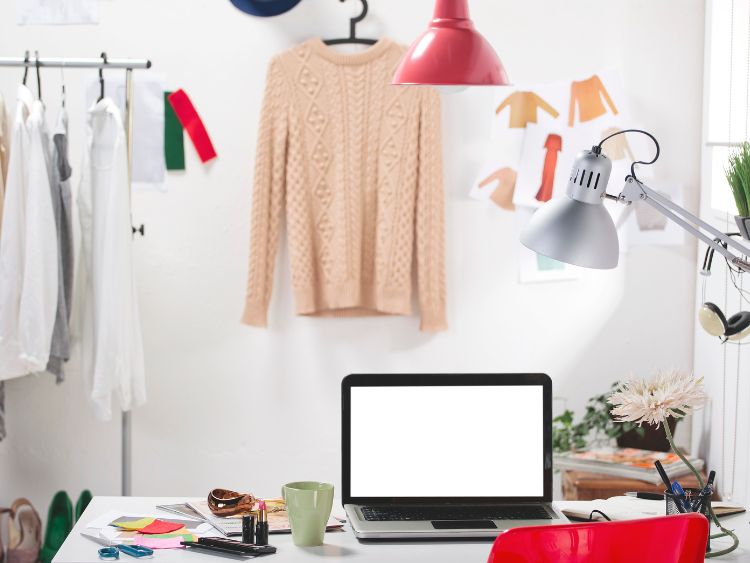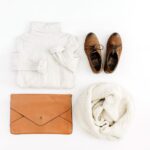Fashion designers are the visionaries behind the stunning clothing and accessories that define trends and set the style bar high. They have a unique gift of transforming creative ideas into wearable pieces that express individuality and spark emotions. But what does it take to become a successful fashion designer, and what goes on behind the scenes of this glamorous profession? Let’s dive deep into the world of fashion design, exploring everything from the skills needed to the day-to-day challenges faced by designers.
What Is a Fashion Designer?
At its core, a fashion designer is someone who creates clothing, footwear, or accessories. These professionals sketch designs, select fabrics, patterns, and colors, and oversee the entire production process. The goal is to create functional and aesthetically pleasing garments that tell a story or represent a brand.
A fashion designer doesn’t just follow trends; they often create them. By blending creativity with practicality, designers can breathe new life into the fashion industry, making their mark in a way that resonates with the masses.
The Skills Every Fashion Designer Needs
If you’re dreaming of becoming a fashion designer, there are several essential skills you’ll need to master:
- Creativity and Artistic Skills: Fashion design is, at its heart, an art form. You need a vivid imagination to come up with fresh, innovative designs that stand out from the crowd.
- Sewing and Pattern Making: While many established designers hire professionals for sewing and pattern-making, knowing how these processes work gives you an edge and improves your overall designs.
- Knowledge of Fabrics and Textiles: Each fabric behaves differently. Understanding how different materials will move, drape, and respond to various conditions is key to making functional and fashionable clothing.
- Trend Awareness: You don’t have to follow every trend, but you need to know what’s happening in the industry to make informed decisions on what might work in the current fashion landscape.
- Business Acumen: Fashion designers often run their own businesses, so understanding marketing, finance, and brand management is critical to long-term success.
How Fashion Designers Work: From Sketch to Runway
While the image of a fashion designer often conjures up scenes of glamorous fashion shows and high-profile celebrity collaborations, the reality is far more detailed. Designers don’t just wake up one day and create a masterpiece – it’s a process. Let’s take a closer look at the journey from idea to finished product.
- Inspiration: Fashion designers draw inspiration from countless sources – nature, architecture, history, or even the current cultural climate. A spark of creativity can come from something as simple as a piece of fabric or a vintage photograph.
- Sketching and Conceptualizing: Once an idea starts forming, designers sketch their vision. This rough draft captures the essence of the design, serving as a blueprint for the final product.
- Fabric Selection: Choosing the right material is crucial. The texture, weight, and flow of the fabric must align with the design vision.
- Pattern Making: Designers or specialized pattern makers create a flat representation of the design. This pattern will serve as the template for cutting and assembling the fabric.
- Creating the Prototype: After the pattern is ready, the prototype is sewn. This sample is often adjusted and reworked until the designer is happy with the result.
- Production: Once the design is finalized, it moves into production. Depending on the designer, this can mean small, custom orders or large-scale manufacturing.
- Marketing and Presentation: Finally, the designer must showcase their work. This could be through fashion shows, social media, or collaborations with retailers and influencers.
The Fashion Designer’s Day-to-Day Life
While many picture fashion designers rubbing shoulders with celebrities at parties, the day-to-day life of a designer is far more varied. Most spend their days sketching, meeting with clients, selecting fabrics, or attending fittings. There’s also a significant amount of time spent on the business side of things, like negotiating with suppliers, managing production schedules, and dealing with marketing efforts.
On top of all that, staying ahead of trends means constantly researching, traveling, and collaborating with other industry professionals. While it can be incredibly demanding, the fulfillment of seeing your designs come to life makes it all worthwhile.
The Road to Becoming a Fashion Designer
Wondering how to become a fashion designer? Here’s a breakdown of the typical journey.
- Education: While natural talent is crucial, formal education helps hone your skills. Many aspiring designers attend fashion schools or art institutes to learn the technical aspects of design, such as sewing, pattern making, and fashion history.
- Internships and Experience: Hands-on experience is invaluable. Interning with established designers or fashion houses can provide insight into the industry’s inner workings and help build essential contacts.
- Building a Portfolio: A portfolio showcases your best work. It’s essential when applying for jobs, internships, or seeking investors or collaborators for your fashion line.
- Launching a Fashion Line: For some designers, the ultimate goal is to create their own brand. This takes a combination of creativity, business sense, and perseverance.
Frequently Asked Questions (FAQs)
Q: How long does it take to become a fashion designer?
A: It varies. For some, it can take several years of education and internships, while others may find success through experience and self-teaching. The key is persistence and continuously honing your craft.
Q: Do you need to know how to sew to be a fashion designer?
A: While it’s helpful to know the basics of sewing, many designers hire skilled professionals for garment construction. However, understanding the process can improve your designs and make communication with production teams smoother.
Q: What’s the difference between a fashion designer and a fashion stylist?
A: A fashion designer creates clothing and accessories, while a stylist puts together outfits using items from different designers. The designer focuses on creation, whereas the stylist works on presentation.
Conclusion
Becoming a fashion designer isn’t just about dreaming up gorgeous dresses or trendy outfits. It requires a deep understanding of fabrics, production techniques, and the industry as a whole. With the right mix of creativity, technical skill, and business acumen, a fashion designer can turn their passion into a thriving career. Whether you’re sketching designs in a notebook or preparing to launch your first fashion line, the journey is an exciting blend of artistry and entrepreneurship.
Authoritative Links:
- https://www.vogue.com/fashion
- https://www.cfda.com/
- https://www.businessoffashion.com/







